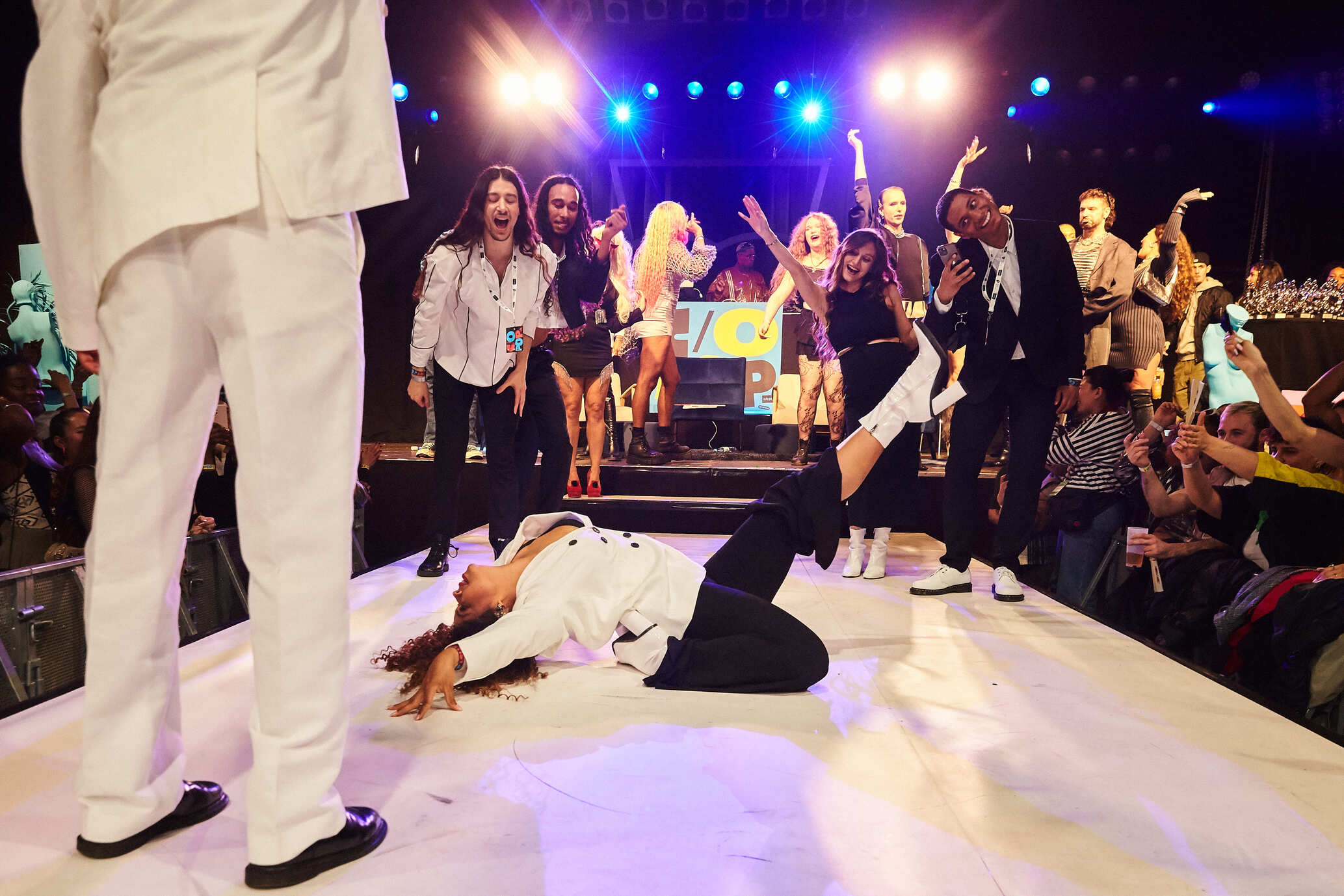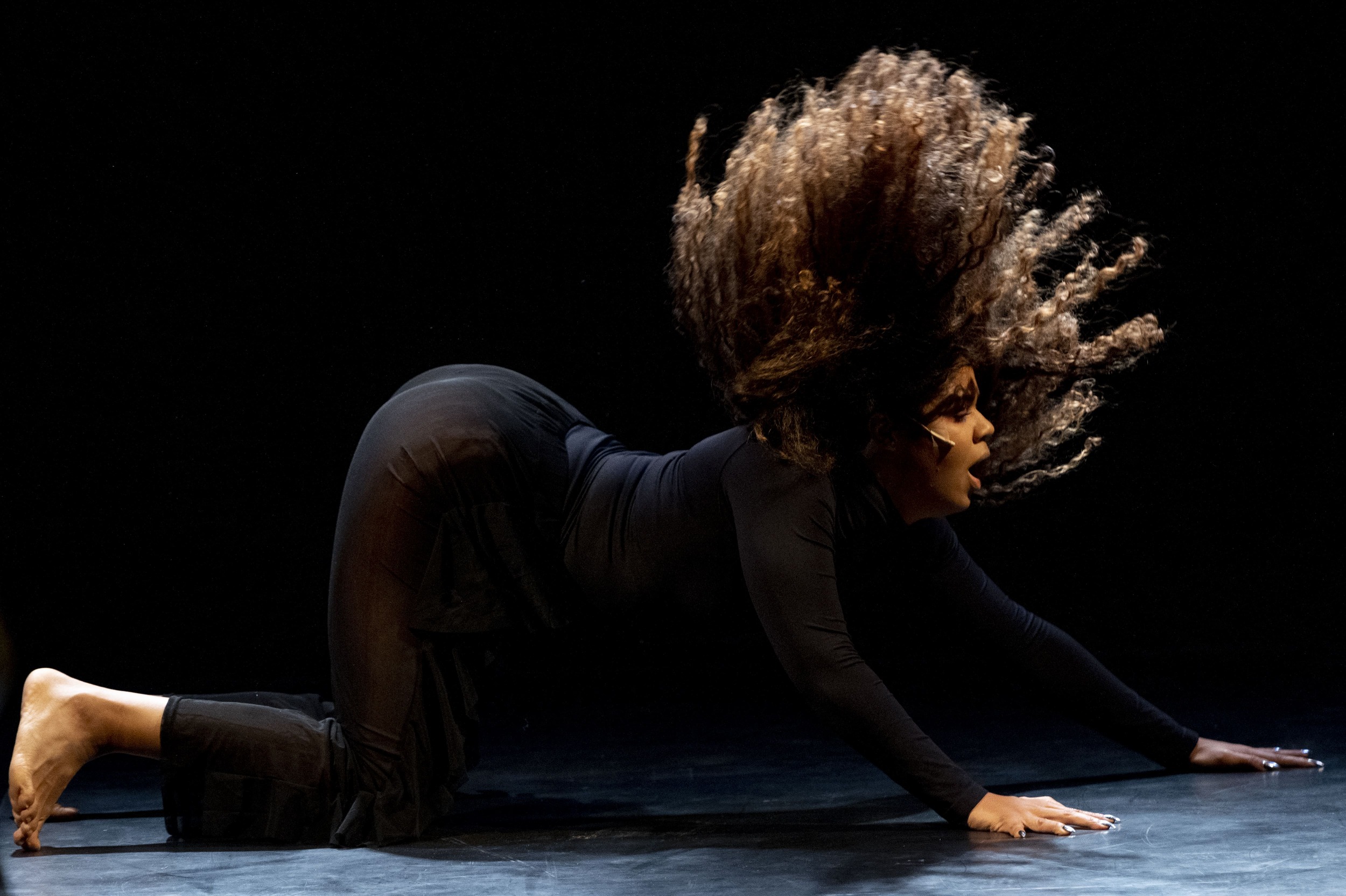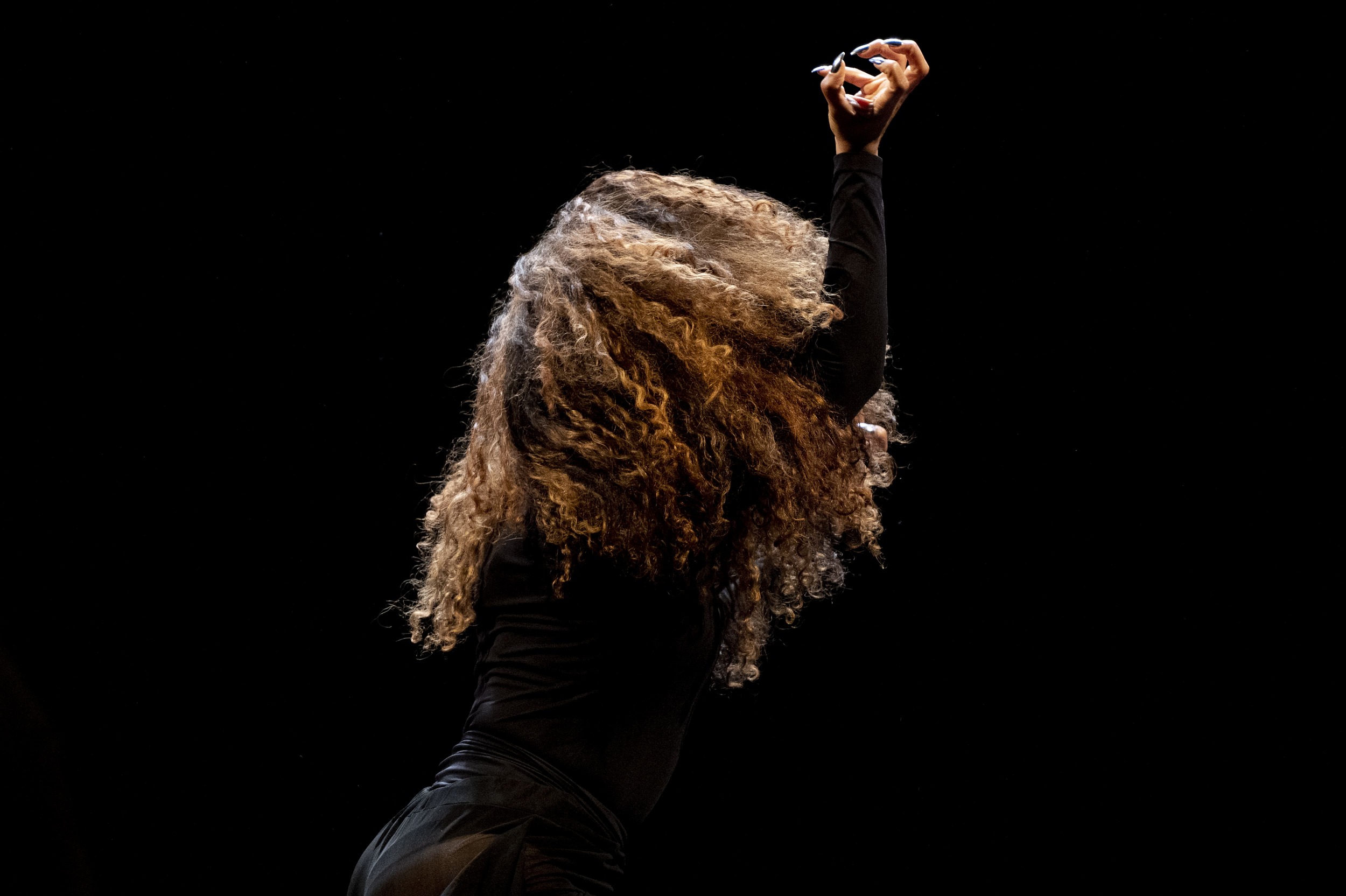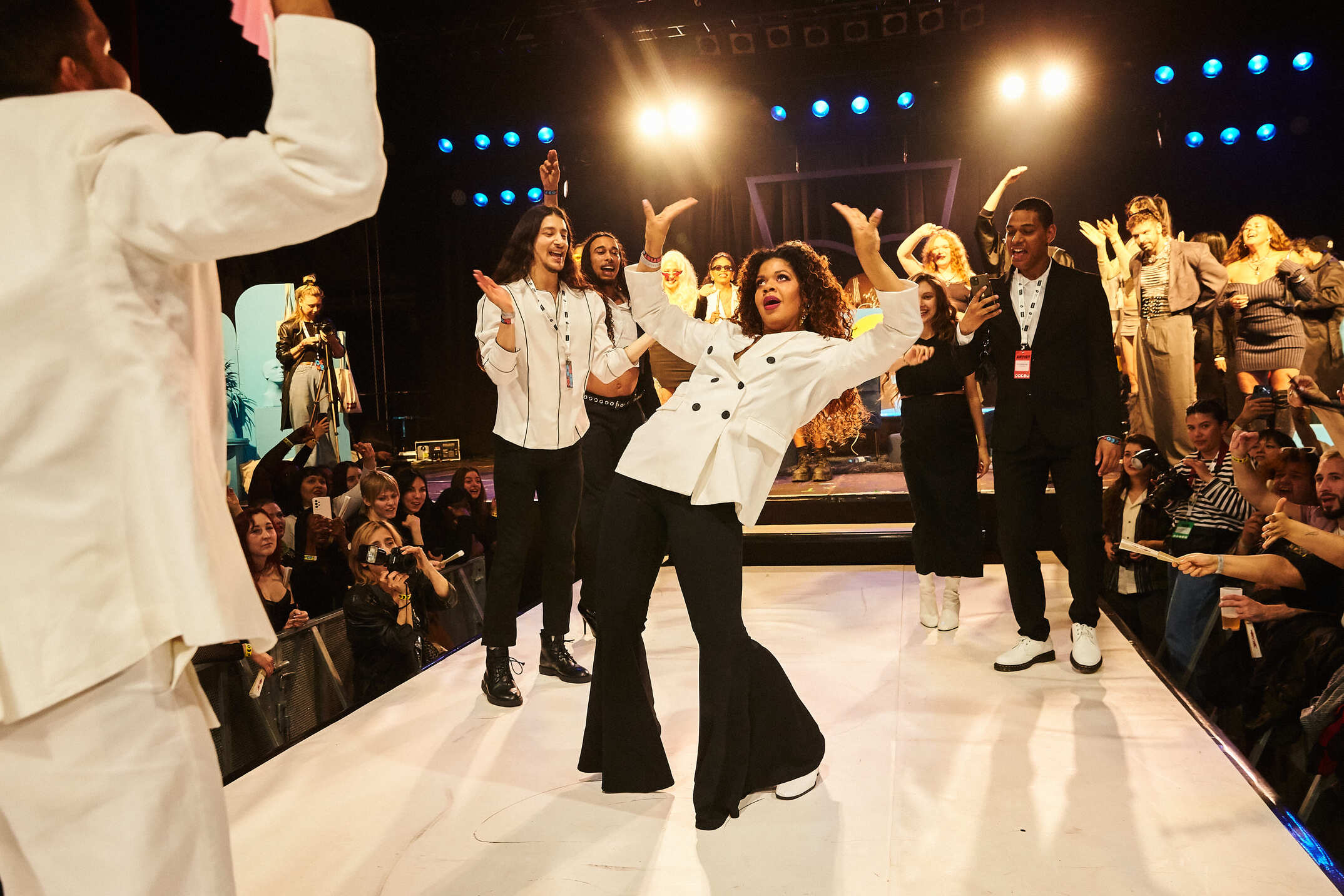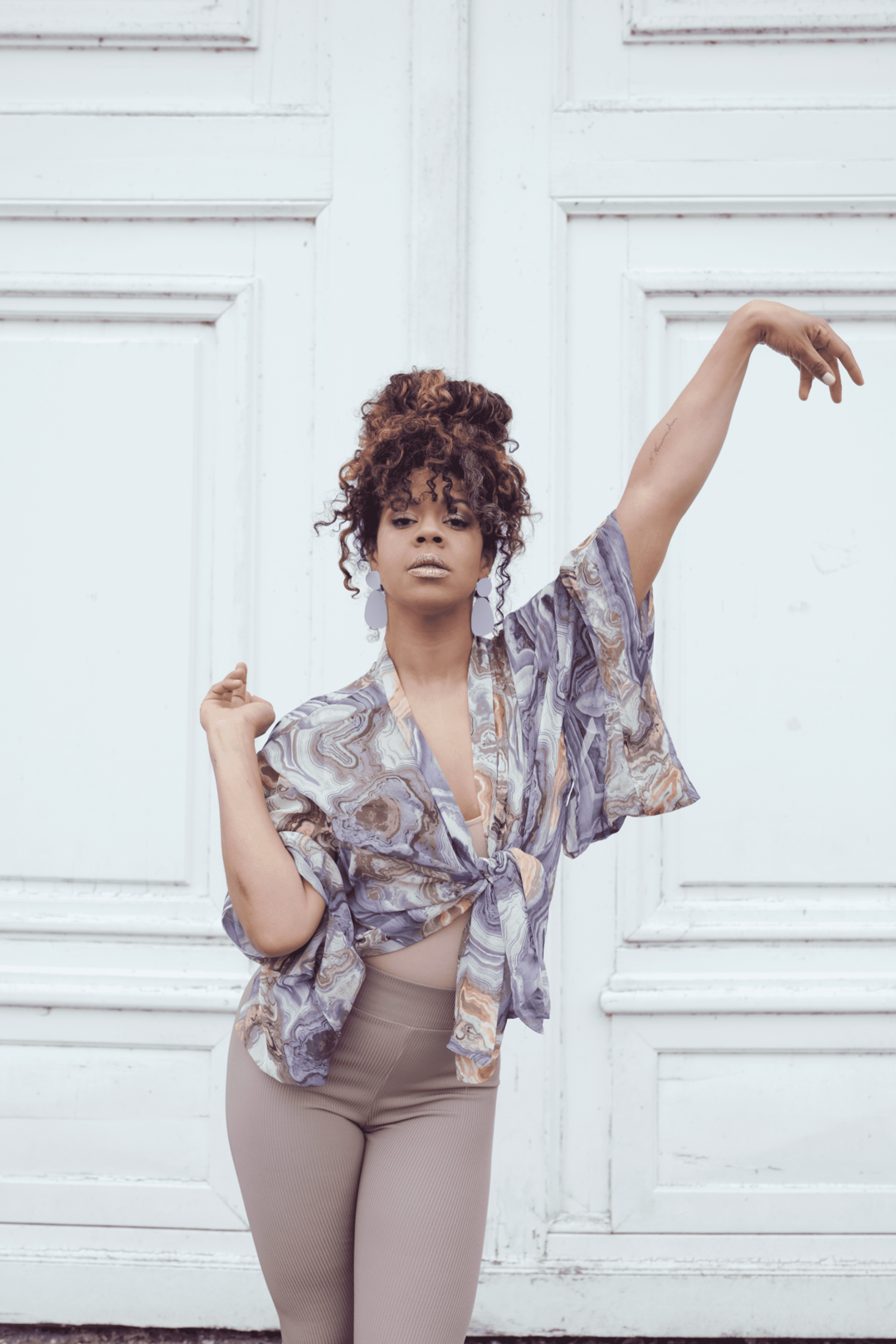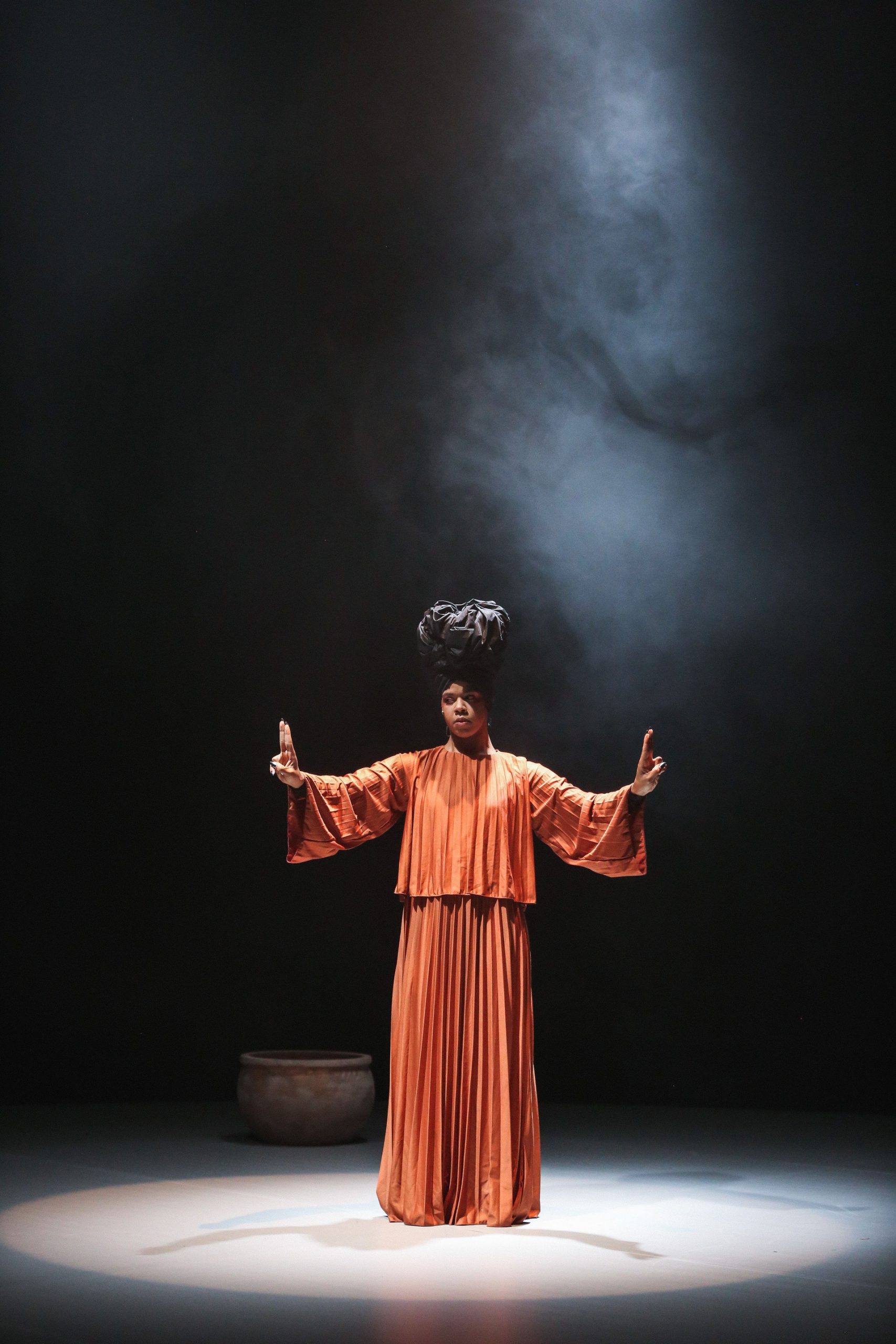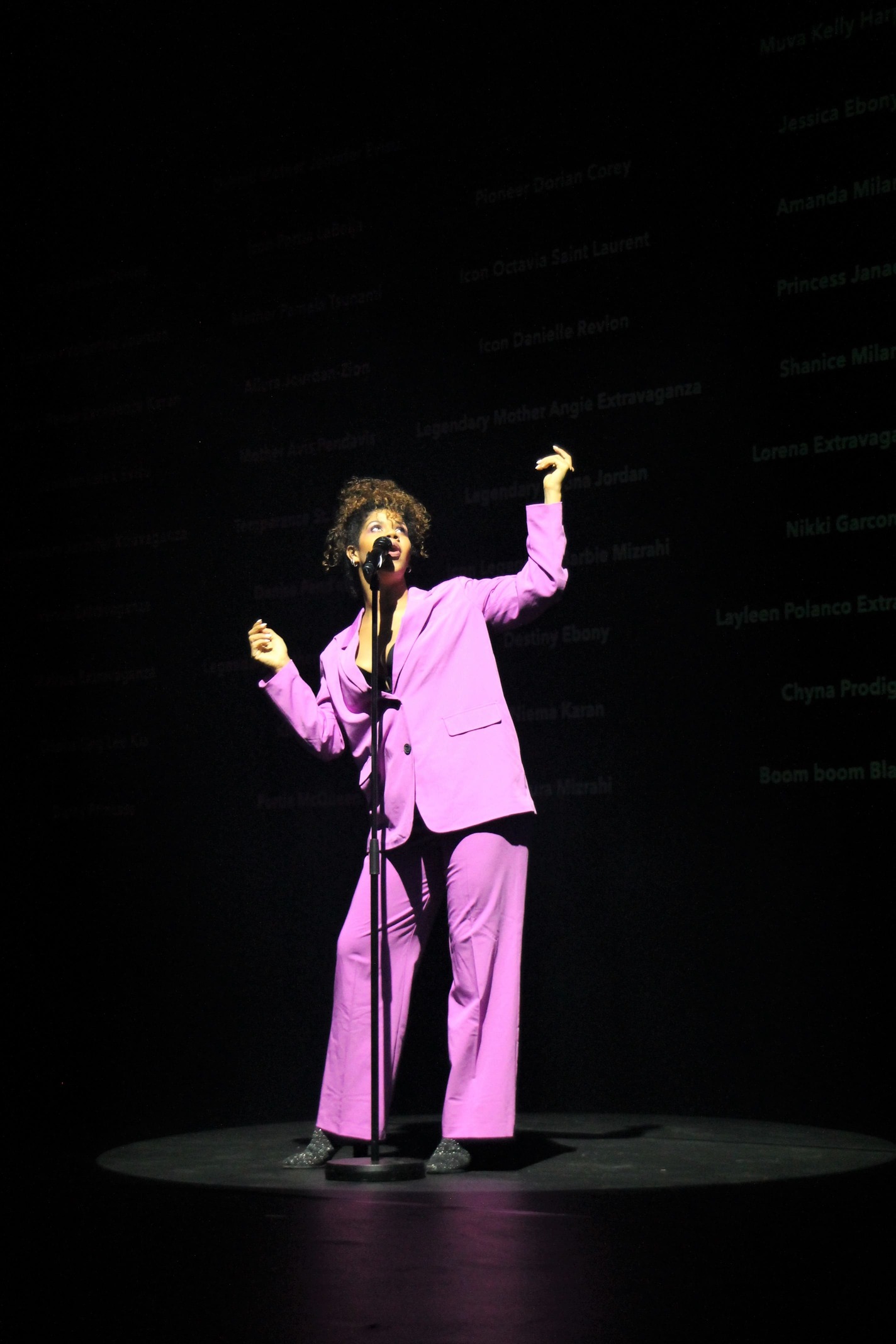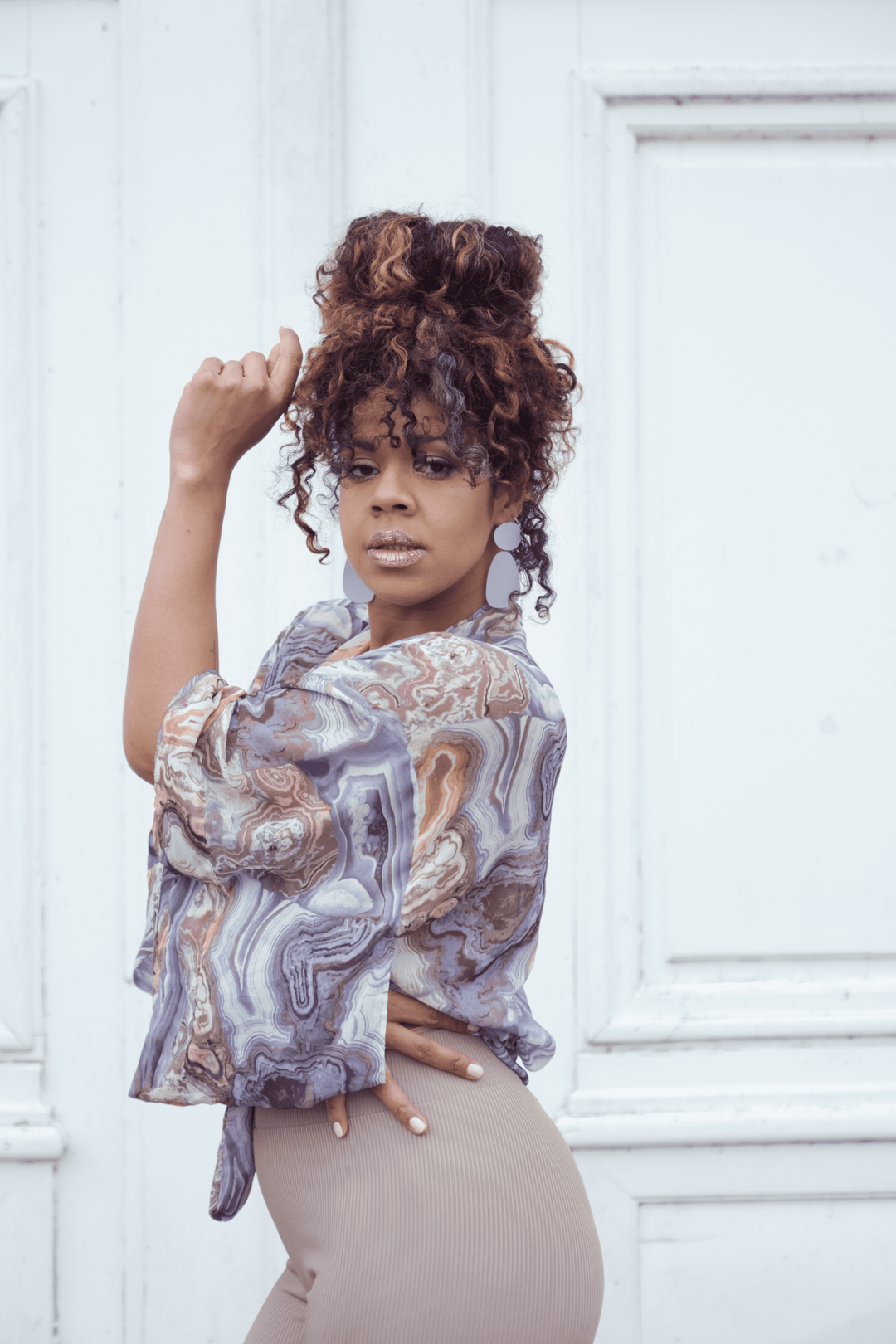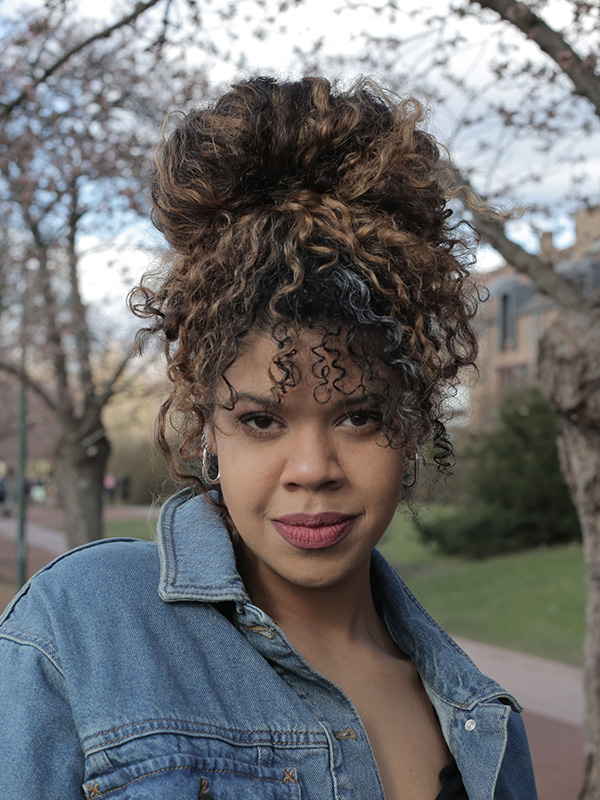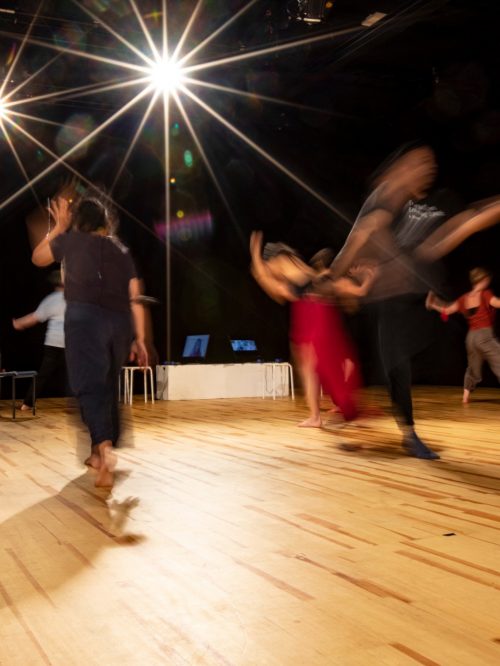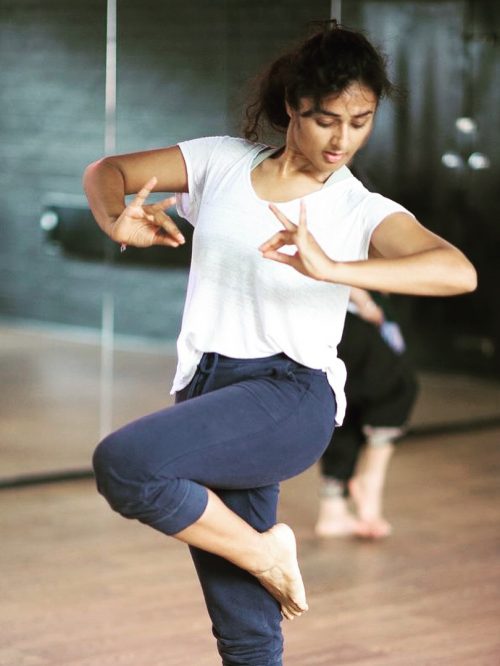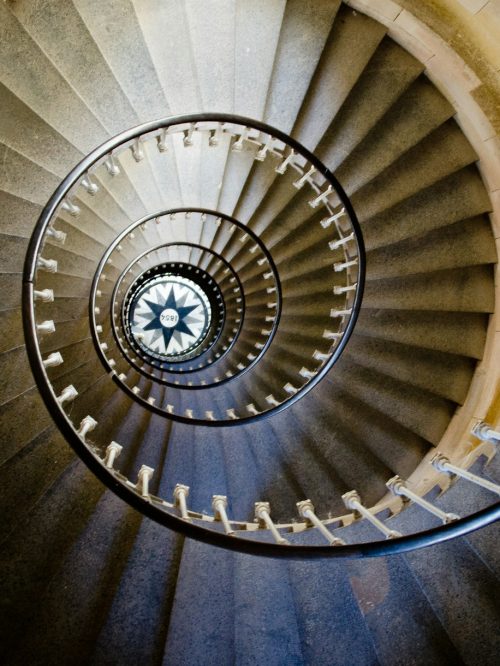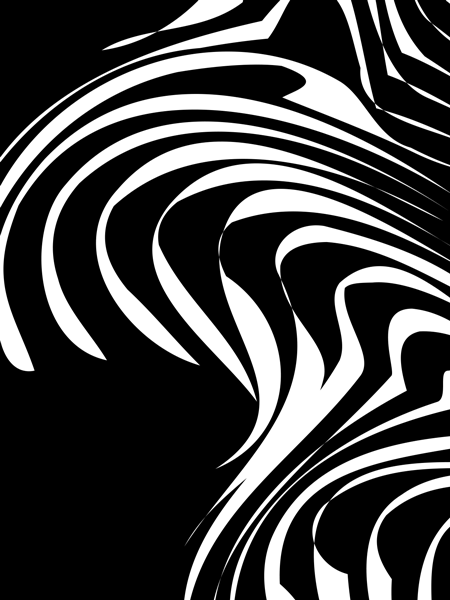The white gaze is my imposter syndrome
The white gaze is my imposter syndrome
The white gaze is always present in spaces where money, power, access and other resources are negotiated. And if it is not in the room, then it encloses the room.
The white gaze is an inner and outer voice that proclaims itself to be the ultimate authority
That determines what is good and what is bad
What is right and what is wrong
What is beautiful and what is ugly
What is valuable and what is obsolete.
The white gaze is mostly also a male gaze.
The white gaze wants to define me, it describes me to the world before I have the opportunity to define and describe myself.
At times it restricts me in my work,
because it defines the framework and provides the structure within which I am allowed to create.
Then it makes me choose between token or activist.
At the same time, it drives me, tirelessly in the eternal struggle for visibility, recognition, appreciation and equality. Always on its own terms.
I am at her mercy, at the mercy of the white gaze.
I am allowed to be audible and visible as long as the gaze looks at and listens to me and my story.
But by becoming conscious, the internal gaze becomes quieter, smaller, less important.
It withdraws.
And its withdrawal brings freedom and responsibility.
It shows me what I really think and feel. Nothing stands between me and my work anymore. No authority, no framework, no point of reference.
What do I do with a contextual frame that always cuts me, whose shape will never fit me, that always points me in a direction I don’t want to go, even if I could?
I can’t force the world to see me the way I want it to. My body is not a blank slate.
But I can determine what I will show and negotiate at what point we will meet.
“TO SEXY TO BE TAKEN SERIOUSLY“ – Eine Anekdote
I consciously encountered the white gaze for the first time in the final presentation of my first solo residency. The audience was allowed to write short feedback sentences on small pieces of paper and give them to the performers. Everything was anonymous and honest.
I don’t know if I am someone who is very open to criticism, especially when it comes from people who are not working in the same field as I am.
At the same time, I believe in universal feelings that we are all capable of, that we can understand and connect with, and that is probably why in the end we all have the ability to appreciate art, even if we don’t understand the craft in detail.
Anyway, I liked the idea and was excited to hear the feedback.
I gave it the best I had to give at that moment and the reactions were varied, but mostly positive.
The points of criticism were also differentiated and helpful.
Only one piece of paper left me puzzled . Then unsettled . Then angry.
And then a completely new perspective was opened up that I hadn’t been aware of until then.
“Too sexy to be taken seriously” were the words on the piece fof paper.
I, like probably many other artists, have a habit of getting hung up on negative feedback – it gets loud, so loud that the positive feedback fades into the background. “TOO SEXY TO BE TAKEN SERIOUSLY”.
I pondered for days whether the quality of my work was simply not good enough, whether the many quotations from literature and scholarship that I had diligently incorporated to emphasize the seriousness of my topic had not been enough to legitimize me as an artist.
And then I realized. I was hit by the white gaze.
A gaze that reads and classifies my body and my movement language. It determines what is said and how it is said and whether it deserves to be heard and seen.
It determines what art is and in what context it can take place.
It judged me and made me realize that I might not be suitable for this space.
Black, female, not academically trained. And it shows. We all know you don’t belong here.
So I had the choice of succumbing to shame and self-criticism or accepting that some things may not be within my control. That I can’t please everyone, can’t be applauded by everyone and can’t be understood or validated by everyone.
This acceptance was a liberating act.
It made me delve even deeper into the stories that move me and pushes me to master the language with which I want to tell them.
Decolonizing the gaze will probably always be an involuntary aspect of my work, simply because of the structures in which I move.
But more and more I am allowing myself not to place it at the center or as the starting point of my work.
About the author
Marie-Zoe Buchholz aka ZOE is an interdisciplinary performance artist and curator from Düsseldorf. The inclusion, visibility, rehabilitation and empowerment of structurally discriminated people and their stories are the focus of her work. She belongs to the first generation of voguing performers in Germany and is regarded as a leading figure for ballroom culture in German-speaking countries. She was longtime member of the House of Melody (today House of Saint Laurent), the first German House, which established the ballroom scene in Germany and was co-founded by ZOE. In the meantime she is the German Mother of House of Elle, an internationally established ballroom house from New York City.
Since 2012, ZOE has worked on various productions, including at the tanzhaus NRW, Düsseldorfer Schauspielhaus and HAU Berlin. In 2017, she became part of the JITTA collective with whom she performed the piece Chombotrope, a German-Kenyan production (MOUVOIR). Chombotrope received the Cologne Dance Award 2017 and since its premiere has been a invited at internationally renowned venues and festivals, including Berliner Festspiele, SPRING in Autumn – Utrecht, Mercat de les Flors, Barcelona and The Nairobi Festival of Performance and Media Art – Kenya.
Since 2019 ZOE has been staging her own works, including Black Magic – a homage (Britney X Festival – Schauspiel Köln, International Women’s Day, Düsseldorf – D’Haus), Feminine Fragments for the reopening of the HAU in Berlin and FEMINA SAGA – a ritual journey, her first full-length production, co-produced by tanzhaus NRW.
As a solo artist and with the collective Shapes&Shades, which she co-founded, she has been regularly curating formats to promote ballroom culture in NRW in cooperation with the tanzhaus NRW, the Theatermuseum Düsseldorf and the Düsseldorfer Schauspielhaus since 2021.
In 2021, ZOE also became a member of the Ethics Committee of the Dachverband Tanz.


